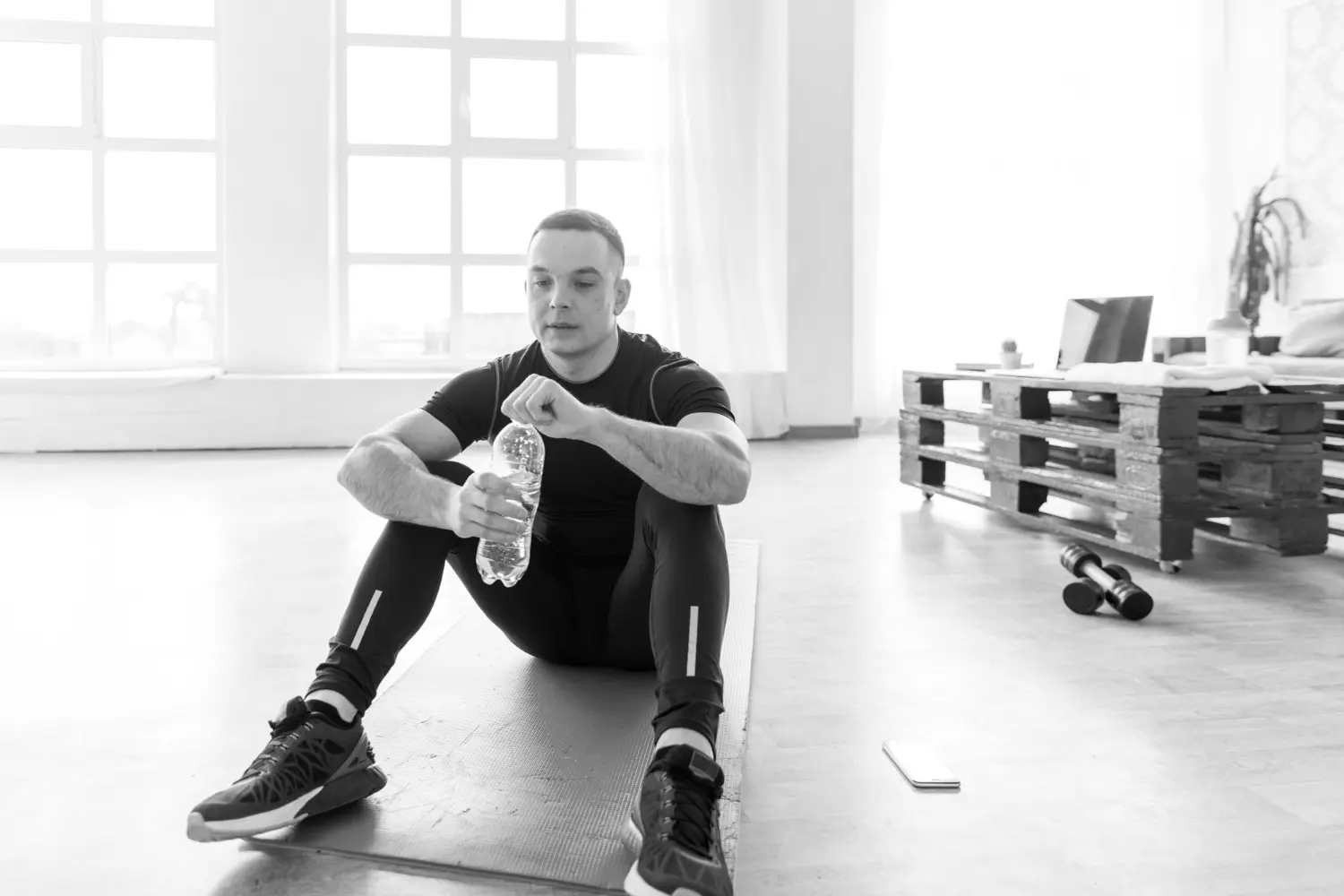Can You Get Off the Floor Without Using Your Hands? Why This Simple Test Predicts Longevity
A single move can reveal your healthspan. See how the Sitting-Rising Test predicts longevity through balance, flexibility, and strength.

One simple move. No weights, no treadmill, no lab. Just you and the floor. And yet despite its simplicity, it can reveal a surprising amount about your mortality risk.
In this single movement, you tap into nearly every aspect of physical health:
- Strength & Power — your ability to lift your bodyweight against gravity
- Flexibility & Mobility — the range of motion in your hips, knees, and ankles
- Balance & Coordination — the control to sit and rise without wobbling or bracing
- Body Composition — excess body fat or low muscle mass make the movement harder
That’s why the Sitting-Rising Test (SRT) has become one of the most powerful—and surprisingly simple—predictors of health and longevity.
At Evolving Health, we often highlight VO₂ max, muscle mass, and functional strength as cornerstones of healthspan. But not every meaningful test requires advanced equipment. The SRT proves that sometimes the simplest measures tell us the most.
How the Test Works
- Start standing: Cross your legs loosely and stand upright.
- Sit down: Without using your hands, knees, arms, or the side of your legs, lower yourself to a cross-legged sitting position.
- Rise up: From there, stand back up the same way — ideally without support.
Each time you use support, points are subtracted from a maximum score of 10:
.png)
Examples:
- Sit and rise completely unsupported = 10/10
- One hand down to sit and another to rise = 8/10
The Science Behind the Test
The SRT has been studied in more than 9,000 people, from children to adults over 100. In those aged 46–75, the findings are striking: lower scores predict higher risk of premature death from cardiovascular and other natural causes.
These results are considered robust because they’ve been validated repeatedly — demonstrating high reliability and reproducibility across populations.
The reason is clear: the SRT simultaneously challenges multiple systems of nonaerobic fitness. It reflects lower-body strength, core stability, balance, and coordination — the same skills that reduce fall risk, maintain independence, and even enhance athletic performance.
In other words, it’s not “just another fitness test.” It’s a real-time snapshot of how well your body integrates strength, mobility, and control — all critical for healthy aging.
Who Benefits Most
Research shows the SRT is especially valuable in:
- Middle-aged and older adults (46–80): Strongest evidence linking lower scores to higher mortality risk
- Community-dwelling older adults: Especially those at risk of falls or functional decline
- Individuals with chronic conditions: Sarcopenia, arthritis, obesity, cardiovascular or neurological disease often reduce performance
For younger athletes, the test may be less telling — but in midlife and beyond, it becomes a remarkably sensitive marker of resilience and longevity.
Limitations to Keep in Mind
- Cultural habits of chair-sitting vs. floor-sitting may influence performance
- Severe arthritis or neurological disease may make the test unsafe
- It should be interpreted with clinical judgment, not as a stand-alone verdict
Still, even after accounting for age, sex, BMI, and chronic disease, the SRT outperforms many classical risk factors in predicting outcomes.
Why Simplicity Matters
In medicine, we sometimes overlook how much insight simple, functional tests can provide. Just as grip strength and walking speed reflect deeper physiology, the SRT demonstrates how everyday movement reveals underlying resilience.
Being able to get off the floor without support isn’t just about mobility — it’s about maintaining the strength, flexibility, and control that protect independence over time.
So try it: can you sit down and rise up without your hands? Challenge your friends and family. Compare across ages. It’s not about perfection, but about awareness.
The Evolving Health Approach
At Evolving Health, we integrate the SRT with advanced diagnostics like VO₂ max testing, DEXA body composition, and functional strength assessments. Together, these tools provide both precision and practicality — a complete picture of your healthspan and how to improve it.
Because whether measured in watts, milliliters, or the simple act of rising from the floor, the goal is the same: living longer, stronger, and with greater independence.
References
Araújo CGS, de Souza E Silva CG, Myers J, et al. Sitting-Rising Test Scores Predict Natural and Cardiovascular Causes of Deaths in Middle-Aged and Older Men and Women. Eur J Prev Cardiol. 2025.
Brito LB, Ricardo DR, Araújo DS, et al. Ability to Sit and Rise From the Floor as a Predictor of All-Cause Mortality. Eur J Prev Cardiol. 2014.
Greenberg T, Soll R, Dolev M, Kalron A. Reproducibility and Convergent Validity of the Sitting-Rising Test in People With Multiple Sclerosis. Arch Phys Med Rehabil. 2021.

.avif)




